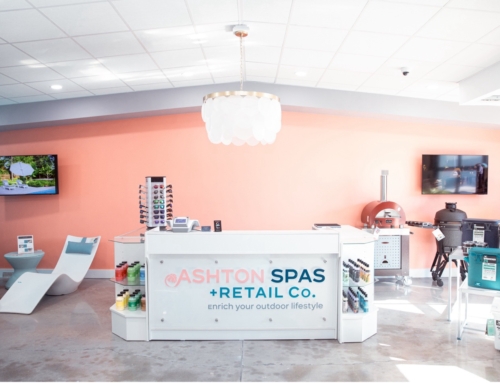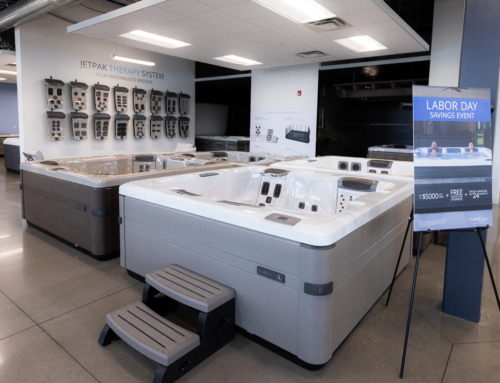After 96 consecutive months of growth since the turning point of the 2008 recession, the US economy may now be bracing for a slowdown again, some economists suggest. What does this mean for spa retailers, who are currently seeing some of the highest sales numbers since the late nineties? First of all, though chances have increased, recession is not imminent. However, business owners should consider their options for operating in a less robust economy.
The global economy, on all scales, moves in cycles. Recessions are natural occurrences, yet can be devastating to businesses that are ill-prepared. Retailers need to turn to lessons learned from the most recent recession and establish fail-safes for the next sales slump. Know your exit strategy, maximize your cash flow, and be patient. It’s important to pay attention to economic trends; it’s equally critical not to overreact.
Takeaways from the 2008 Recession
In the late nineties through the early 2000s, hot tub retailers were seeing record sales. However, in 2007 the atmosphere began to change. The housing crisis hit, and soon consumers were tightening their budgets and spending less. In 2008 alone, spa sales were reportedly estimated to have dropped by an industry-crippling 30%. Retailers and manufacturers continued to suffer for at least four more years as the economy recovered.
In Aqua’s 2012 State of the Industry survey, 23% of retailers reported layoffs in 2010. However, in just one year’s time hiring outpaced layoffs by nearly 10%, marking the beginning of the turnaround. By 2014, fortune began smiling on the industry again, with spa manufacturing up by 1.7%.
Retailers need to turn to lessons learned from the most recent recession and establish fail-safes for the next sales slump.
Fast forward to 2017, and the industry is flourishing, with each year beating out the previous in sales. Between 2016 and 2017, hot tub sales increased by 8%, with a major boost in swim spas (11%). What can be made of all this? Despite even the most uncertain economies, rebounds are possible. Businesses that survived the 2008 recession emerged to regain lost ground. Patience and planning paid off and, ultimately, allowed the industry to thrive once again.
Is Another Economic Turndown on the Horizon?
Today, US markets are trading at unprecedentedly high levels, nearing 100 straight months of economic expansion. Wages are up, jobless numbers are down and unemployment has dipped below 4.7%. This all sounds like good news for retailers, right? Some economists would disagree. In fact, they suggest that these numbers are nearing their natural limits and, sooner rather than later, a shift is to be expected.
In an April Forbes article, economic researcher, KC Sanjay, illustrates that low unemployment rates have historically indicated an imminent recession. He notes that in every recorded economic turndown since World War II, unemployment rates were below 5%. Current employment rates have held steadily below 5% for nearly two years.
Does this mean the economy is overdue for a recession? Not necessarily. Sanjay admits that once other factors are included, recession probability remains as low as 1.4%, and other analysts agree. In fact, economists generally concur that the likelihood of a turndown in 2017 is between 10-20% (not until 40% are recessions considered imminent). In other words, a 2017 recession is not highly likely, but the possibility exists.
Conflating Factors
Calculating recession risk is a difficult science due to the complexity of market factors. While some signs point toward decline, other trends directly contradict. For instance, consumer confidence continues to rise despite rising interest rates and global uncertainty. These conflating factors do indicate uncertainty in the economy, though not necessarily recession.
How to Prepare for the Next Recession
Reassess Your Business
Understanding how your business performs is essential during any economic climate. However, when preparing for a potential recession, it’s even more critical. Evaluating the state of your store or franchise is more involved than simple profit/loss margins.
As Brenda Smith, store manager of Stem Pool & Spas in Fort Smith, AK, said in an interview with Spa Retailer this past February, “[retail] managers need to know more than whether they made a profit or loss…I measure my daily business hourly, weekly, monthly and yearly to plan for staffing, percentage of gross profit of merchandise, sales and closing ratios.”
This kind of hawkeyed micromanagement may seem over the top, but turns out to be a valuable decision-making tool in uncertain economic times. When you have a thorough grasp on your business operations, you have more restructuring flexibility.
Restructure Your Assets
In declining economies, maintaining capital is the key to survival. Or as Michael Evans for Forbes more bluntly puts it, “Many businesses do go out of business during a recession and it is for one fact: they run out of capital.” Your assets are there to protect your business when cash flow is low. Too often, spa retailers let inventory, property, or any other capital go to waste during slow periods, a fatal mistake that can lead to premature bankruptcy.
Too often, spa retailers let inventory, property, or any other capital go to waste during slow periods, a fatal mistake that can lead to premature bankruptcy.
Restructuring your business operations and liquidating tied-up capital can help your business survive even the direst economies. For instance, Evans suggests that companies who own property should consider entering sale-leaseback agreements, where a financer buys your property and leases it back to you. Though owning your building may be important to you, when cash flow is low, liquidating is a viable option.
Reduce Inventory
When speaking with his business analyst, Don Riling of Olympic Hot Tub in Seattle, WA, learned that for each day he reduced his inventory turnover ratio, he could increase cash flow by $23,000. What’s the lesson? The lower the inventory, the fewer sales you need to stay afloat.
In turn, Riling responded by changing his inventory habits. He ordered less and more efficiently. Additionally, he created incentives to drive sales and move stock out of his store room: “I changed the way we were doing business on our e-store, implementing more free-ship days and incentivizing customers to buy during certain periods with either ‘buy one get one free’ promos to move slower turning product/overstock, or a gift with purchase promos.” By the end of the year, Riling and his company were able to free up nearly $460,000 in available cash.
Diversify Merchandise
One of the ways in which retailers can improve sales during low periods is to diversify their product offerings. In his article, Evans discusses the value of adjacency strategy, where businesses expand into natural extensions of their core services. In the spa industry, many retailers have ventured into outdoor furniture, health and wellness, and spa maintenance. In order to survive uncertain economic climates, your business must be able to adapt.
Outsource Non-Strategic Roles
Labor is one of the largest factors in your bottom line. When cash flow is limited, you cannot operate with the same payroll you had in more prosperous times. Unfortunately, this does mean laying off employees so your business has a better chance of getting through a recession.
Depending on the size of your operation, you may already outsource a significant amount of services, such as invoice collection, accounting, and more. Small retailers, even in good times, may not be able to afford these services in-house. Using outsourced agencies to complete these non-strategic services can reduce payroll spending significantly.
Fight or Flight
The ultimate decision facing spa retailers under threat of recession is whether to stick it out or plan an exit. All business owners should have an exit strategy in place, whether for long-term retirement planning or potential acquisition offers. You should always consult with a merge and acquisitions advisor who can help you plan for selling your business, including partial stakes, shareholding, and more. However, having a plan and knowing when to implement it are two different things.
All business owners should have an exit strategy in place, whether for long-term retirement planning or potential acquisition offers.
At the first sign of economic turmoil, some business owners may have the inclination to get out quick. However, this may not be the best option. In fact, one of the worst times to sell your business is when the economy is weak. Actually, the best time “to sell a business is when things are going so well that you can’t imagine selling it,” says Mills Snell, senior research analyst at Pendleton Street Advisors in Columbia, SC, speaking with Pool & Spa News this past October.
At the end of the day, it’s important to remember that the economy moves in cycles. No period, high or low, lasts forever–nor should it. It’s these cycles which move the competition, force markets to adapt, and allow for business to innovate. Spa retailers are not immune to the waves of the global economy. Recessions are difficult, but not impossible to survive. With preparedness and flexibility, even small spa retailers can forge the tides of fortune to more prosperous shores.









Leave A Comment